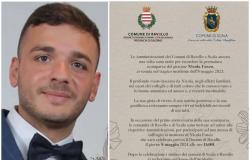
Venice closes the first day of testing the entry ticket with a total of 113 thousand arrivals, 15,700 and 700 paying people and no fines. This means that just over one person in 10 paid the sum of 5 euros to obtain a pass from 8.30 to 16.00, all the others could count on some exemption. In fact, 97 thousand exempt people entered the city, required to register on the online platform but not to pay. Among these are approximately 39 thousand guests in accommodation facilities (who already pay the tourist tax), over 4 thousand among relatives and friends of residents. The data was released by the budget councilor, Michele Zuin. The measure was designed to defend Venice fromovertourism and to curb tourist journalists who want to visit the Venetian capital even on the so-called “black mark” days. From the first reactions, however, there seem to have been more protests, noisy and participatory, and controversy over the debut of the contribution.
Protests and confrontations
In fact, during the day there were moments of tension between protesters and the police. In an attempt to enter the city, the march – organized against the measure – was blocked by a cordon of police in riot gear. «We will not remain silent, we will be heard. And if it has to be a circus, let it be a circus”, said the demonstrators, who also displayed a sign with the words “Veniceland” and distributed fake tickets. The event was organized by the Social Assembly for the House together with the Morion social centre, but also saw the participation of many residents and other associations. After the moments of conflict, the procession continued towards Campo Santa Margherita where it ended with a concert. There was a calmer climate, however, in a second demonstration by the citizen committees against the ticket, positioned close to the QR checkpoint. There was also a brief confrontation with the mayor, Luigi Brugnaro, which ended in a hug.
Mayor Brugnaro: «I apologize for the inconvenience but I am satisfied»
«Nothing has ever been done to regulate tourism, politicians don’t do it because they have no interest in doing so. I did it”, said the mayor of Venice Per – who had already explained in a video (in perfect English, thanks to AI) the usefulness of the ticket – in front of the station, where the gates were installed for the start of the experiment on the access contribution to the historic city. «I apologize for the inconvenience but we have to do something – he added – we can’t just talk, we have to try to do something and now we are doing it because we have the duty and task of leaving and preserving the city for the next generations – he has declared -. «The fear of change is legitimate, but this too can be used to improve but if fear blocks everything there is no progress, there is no future». Regarding the protests, Brugnaro made it known that he accepts them because “they are legitimate, I only hope – he underlined – that it helps to improve”.
What happens now
The testing of the entry ticket will continue throughout 2024, during the 29 days at risk of invasion marked in the calendar. «We have to collect data – continued Brugnaro – and information to then calibrate the system, offer services as the QR code already does which has the city map with, for example, the toilets marked and then when we move on to the economic profit everything will go in services to the city: we no longer have the funding from the Special Law for Venice even if, if it is found for the Messina bridge, it could also be found for this unique city”, he concluded.





